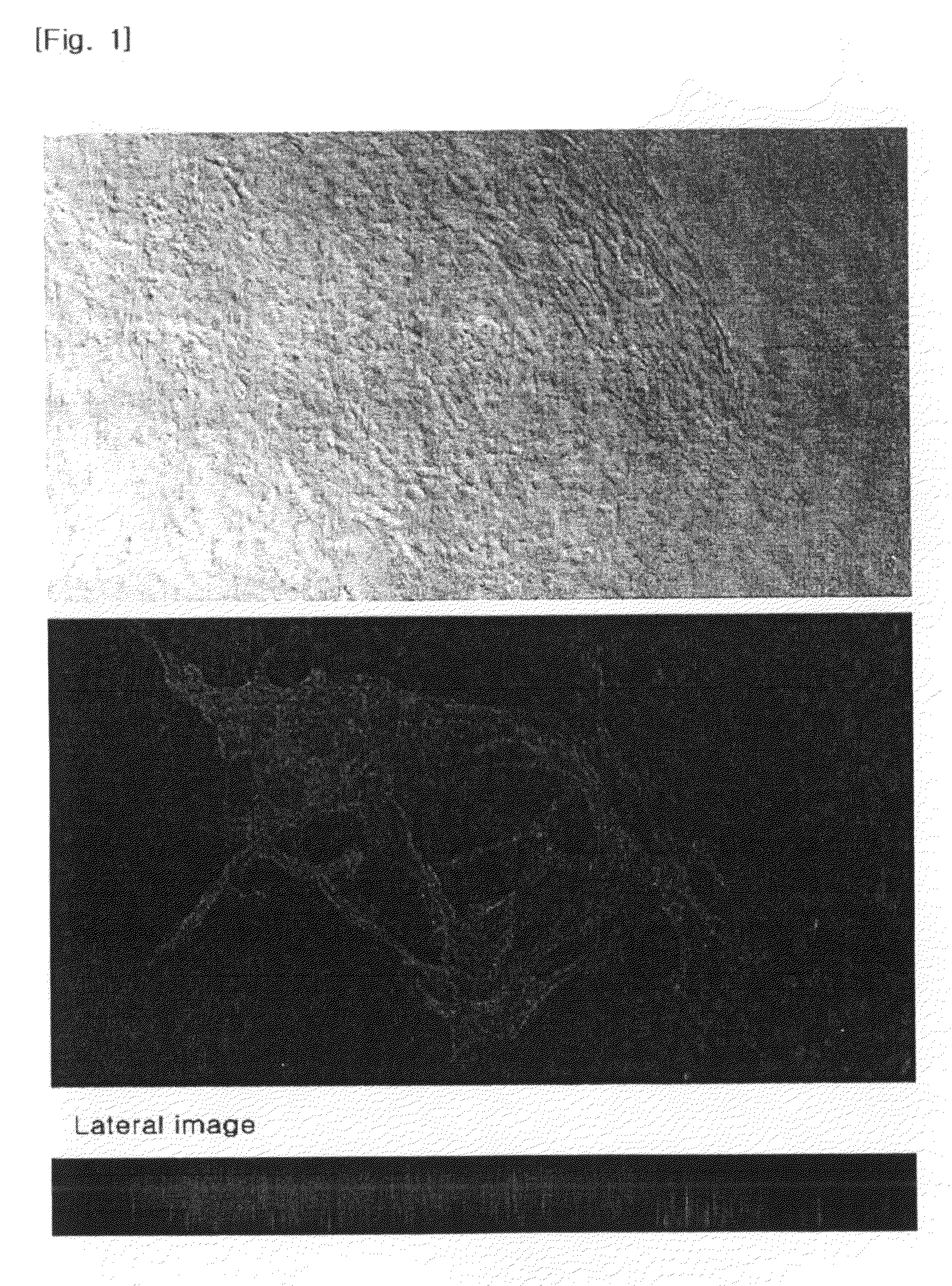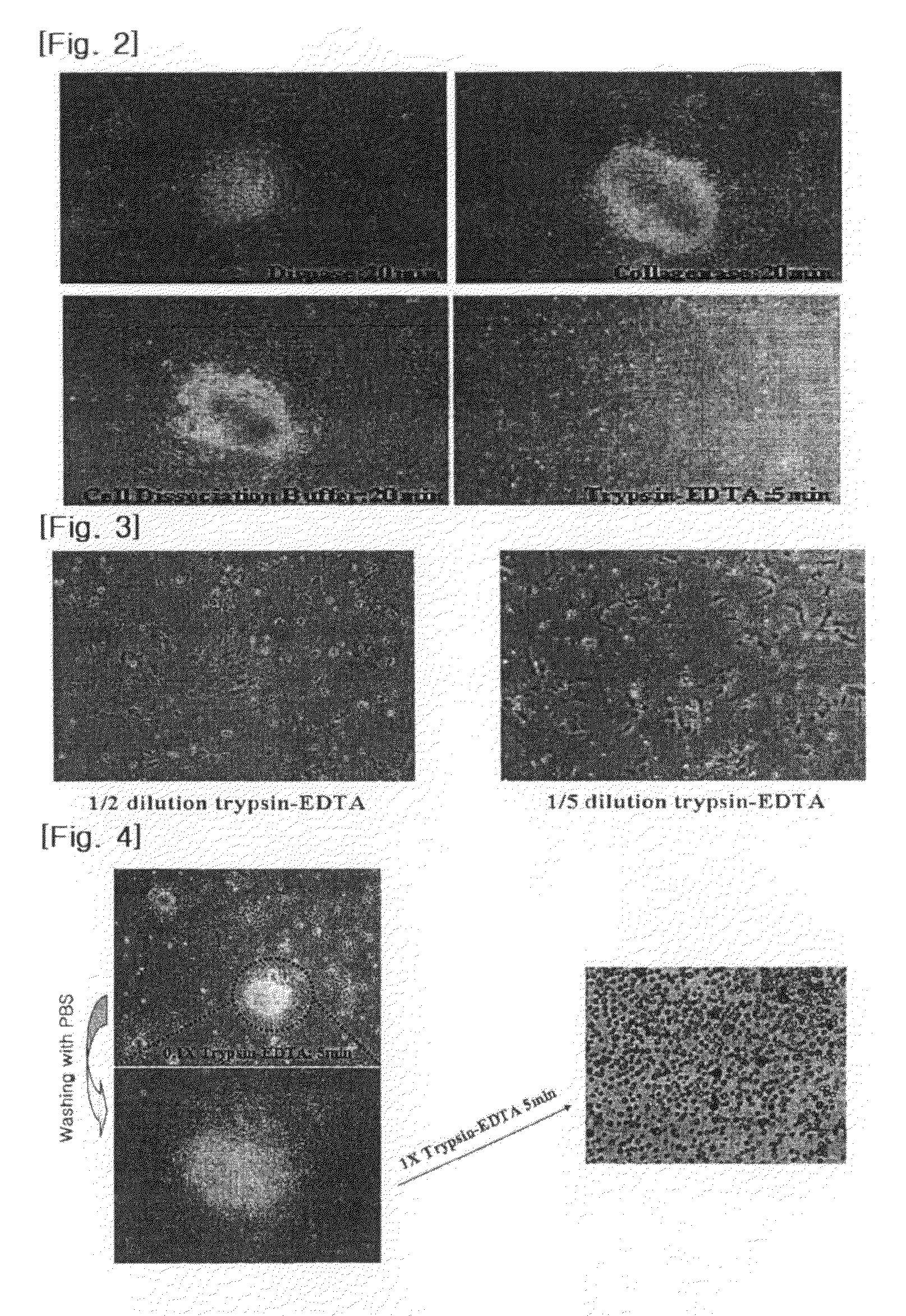Process for isolating vascular endothelial cells from embryoid bodies differentiated from embryonc stem cells
a technology of vascular endothelial cells and embryoid bodies, which is applied in the field of isolating vascular endothelial cells from embryoid bodies differentiated from embryonic stem cells, can solve the problems of large amount of cells being destroyed, unsatisfactory methods capable of selectively and efficiently isolating only target cells, and no effective treatment has yet been identified. , to achieve the effect of selective and high yield
- Summary
- Abstract
- Description
- Claims
- Application Information
AI Technical Summary
Benefits of technology
Problems solved by technology
Method used
Image
Examples
example 1
[0034]Mouse fibroblasts (STO cells, 2.5×105 cells / well), which had been treated with mitomycin-C for two hours to prevent cell proliferation, and feeder cell culture media (90% DMEM supplemented with 10% FBS, 0.1 mM mercaptoethanol, and 1% nonessential amino acid (Gibco)) were plated on gelatin-coated culture dishes, and the STO cells were cultured for 24 hours. The culture dishes were washed twice with phosphate is buffered saline media. The media in the culture dishes were replaced with culture media (80% KO-DMEM supplemented with 20% serum replacement (SR), 0.1 mM mercaptoethanol, 1% nonessential amino acid (Gibco), and 4 ng / ml bFGF), and human embryonic stem cells (CHA-hES3) were cultured for about seven days.
[0035]Human embryonic stem cell colonies formed in the culture media were detached from neighboring feeder cells by a glass pipette, and were then suspension-cultured in culture media including 20% serum replacement (Gibco), 0.1 mM mercaptoethanol, 1% nonessential amino aci...
example 2
Step 1: Lower Dose Trypsin-EDTA Treatment
[0037]The embryoid bodies obtained in Example 1 were seeded on culture media (90% DMEM supplemented with 10% FBS, 0.1 mM mercaptoethanol, and 1% nonessential amino acid (Gibco)). A 10-fold dilute solution of a trypsin-EDTA solution (Sigma, U.S.A.) of 0.25% trypsin and 1 mM EDTA in a 0.9% sodium chloride solution was added to the culture media, and the embryoid bodies were cultured for five minutes.
Step 2: Separation into Single Cells
[0038]The embryoid bodies obtained in step 1 were washed with a phosphate buffered saline to thereby completely remove cell clusters in the outer regions of the suspended embryoid bodies. A trypsin-EDTA solution (Sigma, U.S.A.) of 0.25% trypsin and 1 mM EDTA in a 0.9% sodium chloride solution was added, and the remaining cell clusters were cultured for five minutes to thereby separate the cell clusters into single cells.
example 3
[0039]The same treatment as in Example 2 was performed except that in step 1, a 8-fold dilute solution of the trypsin-EDTA solution (Sigma, U.S.A.) was added to embryoid bodies, and the embryoid bodies were cultured for one, three, and five minutes.
PUM
| Property | Measurement | Unit |
|---|---|---|
| concentration | aaaaa | aaaaa |
| cell mass | aaaaa | aaaaa |
| Fluorescence Activated Cell Sorter | aaaaa | aaaaa |
Abstract
Description
Claims
Application Information
 Login to View More
Login to View More - R&D
- Intellectual Property
- Life Sciences
- Materials
- Tech Scout
- Unparalleled Data Quality
- Higher Quality Content
- 60% Fewer Hallucinations
Browse by: Latest US Patents, China's latest patents, Technical Efficacy Thesaurus, Application Domain, Technology Topic, Popular Technical Reports.
© 2025 PatSnap. All rights reserved.Legal|Privacy policy|Modern Slavery Act Transparency Statement|Sitemap|About US| Contact US: help@patsnap.com



